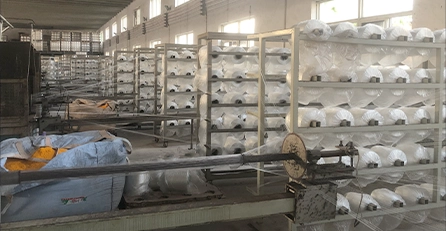vacuum hose
Understanding Vacuum Hoses A Comprehensive Overview
Vacuum hoses are essential components in various systems, primarily used in automotive applications, industrial machinery, and household appliances. These flexible tubes facilitate the movement of air and fluids, playing a crucial role in ensuring the efficiency of vacuum systems. This article aims to provide a thorough understanding of vacuum hoses, their types, applications, and maintenance.
What are Vacuum Hoses?
Vacuum hoses are specially designed tubes that transport air or gases in a vacuum environment. Unlike standard hoses, which may allow for air infiltration, vacuum hoses maintain a low-pressure environment, enabling efficient operation of the systems they serve. These hoses are typically made from durable materials like rubber, silicone, or thermoplastics, capable of withstanding various temperatures and chemical exposures.
Types of Vacuum Hoses
1. Rubber Vacuum Hoses Rubber hoses are commonly used in automotive applications due to their flexibility and resistance to degradation from environmental factors. They are often found in engine systems, connecting components such as the intake manifold and brake booster.
2. Silicone Vacuum Hoses Silicone hoses offer superior resistance to heat and abrasion, making them ideal for high-performance vehicles. These hoses maintain their shape under high temperatures and pressure, ensuring reliability in demanding conditions.
3. Thermoplastic Vacuum Hoses These hoses are lightweight and resistant to chemicals. They are commonly used in industrial applications where pressure and chemical resistance are critical.
4. Reinforced Vacuum Hoses Reinforced hoses are designed with an internal structure that provides additional strength, allowing them to withstand higher pressures without collapsing. This type is often utilized in heavy-duty applications.
Applications of Vacuum Hoses
Vacuum hoses have a wide range of applications across various industries
- Automotive In vehicles, vacuum hoses are crucial for controlling different systems, such as engine management, air intake, and braking systems
. They help regulate airflow and pressure to ensure optimal performance.vacuum hose

- Industrial In manufacturing and assembly lines, vacuum hoses are employed in suction systems for transporting materials and ensuring cleanliness in work areas. They are also used in CNC machines for effective dust and debris extraction.
- Household Appliances In vacuum cleaners and other cleaning devices, these hoses play a vital role in transporting dust and debris into the collection container. The design and material used in these hoses ensure effective suction and durability.
Maintenance of Vacuum Hoses
Proper maintenance of vacuum hoses is essential for ensuring their longevity and effectiveness. Here are some tips for maintaining vacuum hoses
1. Regular Inspection Periodically check for any signs of wear, such as cracks, leaks, or fraying. Early detection of damage can prevent more significant issues down the line.
2. Cleaning Keep the hoses clean to prevent blockages. Use a mild cleaning solution and water to gently clean the exterior, and ensure that the interior is clear of debris.
3. Proper Installation Ensure that vacuum hoses are installed correctly. Improper connections can lead to air leaks, compromising the vacuum system’s efficiency.
4. Temperature Control Be mindful of the operating temperatures. Avoid exposing vacuum hoses to extreme conditions that can lead to deterioration.
5. Replacement If a hose shows significant wear or damage, it’s best to replace it promptly to maintain system integrity.
Conclusion
Vacuum hoses are vital components across various applications, from automotive to industrial settings. Understanding their types, applications, and maintenance can lead to enhanced performance and longevity of the systems they support. Whether you are a DIY enthusiast working on your vehicle or an industrial professional, keeping your vacuum hoses in top condition is essential for ensuring optimal operational efficiency. By prioritizing maintenance and timely replacements, you can ensure that your vacuum systems operate smoothly and effectively for years to come.
-
Top Quality Oxy Acetylene Hoses for Sale Fit for Welding DemandsNewsJul.28,2025
-
The Future of Pneumatic Air Tubes in IndustryNewsJul.28,2025
-
Superior and Reliable LPG Hose Pipe Solutions for Every NeedNewsJul.28,2025
-
Exceptionally Durable and Versatile Premium Braided PVC TubingNewsJul.28,2025
-
Best Adapters for Connecting Garden Hose to PVC Pipe ConnectionsNewsJul.28,2025
-
The Essential Role of LPG Hoses in Safe and Efficient Gas DistributionNewsJul.16,2025














